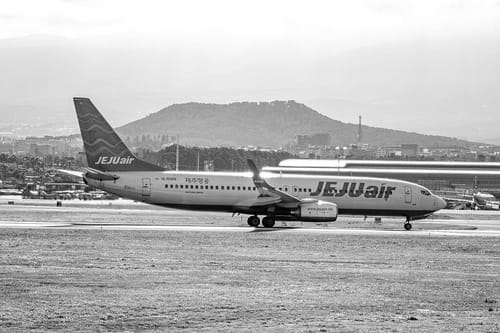
Photo Attribution: 캡틴, CC BY 2.0 KR https://creativecommons.org/licenses/by/2.0/kr/deed.en, via Wikimedia Commons
Jeju Air 2216 Crash
This example has been viewed 355x times
Summary
Rodden Rating
Analysis for Jeju Air 2216 Crash
Biography
Jeju Air Flight 2216 was a scheduled international passenger flight operated by Jeju Air from Suvarnabhumi Airport in Bangkok, Thailand, to Muan International Airport in Muan County, South Korea. On 29 December 2024, the Boeing 737-800 operating the flight had a bird ingest into one of the engines, issued a mayday alert, performed a go-around, and on its second landing attempt, failed to deploy its landing gear and belly landed well beyond the normal touchdown zone. It overran the runway and crashed into a berm encasing a concrete structure that supported an antenna array for the instrument landing system. The collision killed all 175 passengers and 4 of 6 crew members. The surviving 2 cabin crew were seated in the rear of the plane, which detached from the fuselage, and were rescued with injuries.[1]
The accident marked the deadliest aviation disaster involving a South Korean airliner since the 1997 crash of Korean Air Flight 801 in Guam (which had 229 fatalities) and became the deadliest aviation incident on South Korean soil, surpassing the 2002 crash of Air China Flight 129 that killed 129 people.[2] This was the first fatal crash in the history of Jeju Air, which was 19 years old at the time of the accident.[3]
The accident became the deadliest aviation accident involving a Boeing 737 Next Generation aircraft and the deadliest aviation accident since the 2018 crash of Lion Air Flight 610 (which had 189 fatalities).[4]
Source: https://en.wikipedia.org/wiki/Jeju_Air_Flight_2216
Raw Data
Horoscope Data
Comments
Natal Data
2024-12-29 02:27:00 LMT
13° 45′ 22.8″ N 100° 30′ 6.4″ E
Bangkok, Thailand

























































_9M-MRO_-_color.jpg?bossToken=6a7be8f5df37ebaa75af9cf1643ebb6d92e9d4b21e9596aa175bc65f2bb52dc1)
.jpg?bossToken=16799c22f04bd114f6fd6a151c43bbe89e71965a04e53c4111696bde2230e801)




_(cropped).jpg?bossToken=46fbbdccea8f2e5add1553e2e379ef6de2d055a368c61bd2261c8c33261dcc82)
.jpg?bossToken=056b6988a0d84ed873b53faa760ae77d6bfd102904c6c78dec10939ecdec0f6d)
.jpg?bossToken=b285e1fe73dc4fab25e81c6e108a3d5d2cfc47ed16dcf280e0813784eb56530d)



